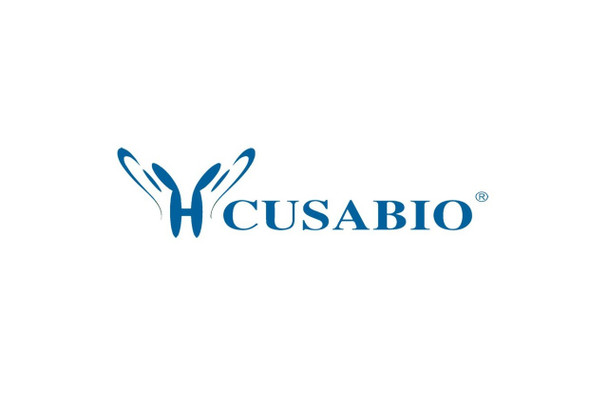Cusabio Human Recombinants
Recombinant Human Werner syndrome ATP-dependent helicase (WRN), partial | CSB-EP614518HU1a0
- SKU:
- CSB-EP614518HU1a0
- Availability:
- 13 - 23 Working Days
Description
Recombinant Human Werner syndrome ATP-dependent helicase (WRN), partial | CSB-EP614518HU1a0 | Cusabio
Alternative Name(s): Werner syndrome ATP-dependent helicase(EC 3.6.4.12)(DNA helicase, RecQ-like type 3)(RecQ3)(Exonuclease WRN)(EC 3.1.-.-)(RecQ protein-like 2)
Gene Names: WRN
Research Areas: Epigenetics and Nuclear Signaling
Organism: Homo sapiens (Human)
AA Sequence: NLGLPTKEEEEDDENEANEGEEDDDKDFLWPAPNEEQVTCLKMYFGHSSFKPVQWKVIHSVLEERRDNVAVMATGYGKSLCFQYPPVYVGKIGLVISPLISLMEDQVLQLKMSNIPACFLGSAQSENVLTDIKLGKYRIVYVTPEYCSGNMGLLQQLEADIGITLIAVDEAHCISEWGHDFRDSFRKLGSLKTALPMVPIVALTATASSSIREDIVRCLNLRNPQITCTGFDRPNLYLEVRRKTGNILQDLQPFLVKTSSHWEFEGPTIIYCPSRKMTQQVTGELRKLNLSCGTYHAGMSFSTRKDIHHRFVRDEIQCVIATIAFGMGINKADIRQVIHYGAPKDMESYYQEIGRAGRDGLQSSCHVLWAPADINLNRHLLTEIRNEKFRLYKLKMMAKMEKYLHSSRCRRQIILSHFEDKQVQKASLGIMGTEKCCDNCRSRLDHC
Source: E.coli
Tag Info: N-terminal 6xHis-tagged
Expression Region: 500-946aa
Sequence Info: Partial
MW: 56.8 kDa
Purity: Greater than 85% as determined by SDS-PAGE.
Relevance: Multifunctional enzyme that has both magnesium and ATP-dependent DNA-helicase activity and 3'->5' exonuclease activity towards double-stranded DNA with a 5'-overhang. Has no nuclease activity towards single-stranded DNA or blunt-ended double-stranded DNA. Binds preferentially to DNA substrates containing alternate secondary structures, such as replication forks and Holliday junctions. May play an important role in the dissociation of joint DNA molecules that can arise as products of homologous recombination, at stalled replication forks or during DNA repair. Alleviates stalling of DNA polymerases at the site of DNA lesions. Important for genomic integrity. Plays a role in the formation of DNA replication focal centers; stably associates with foci elements generating binding sites for RP-A (By similarity). Plays a role in double-strand break repair after gamma-irradiation.
Reference: "WRN exonuclease structure and molecular mechanism imply an editing role in DNA end processing." Perry J.J., Yannone S.M., Holden L.G., Hitomi C., Asaithamby A., Han S., Cooper P.K., Chen D.J., Tainer J.A. Nat. Struct. Mol. Biol. 13:414-422(2006)
Storage: The shelf life is related to many factors, storage state, buffer ingredients, storage temperature and the stability of the protein itself. Generally, the shelf life of liquid form is 6 months at -20?/-80?. The shelf life of lyophilized form is 12 months at -20?/-80?.
Notes: Repeated freezing and thawing is not recommended. Store working aliquots at 4? for up to one week.
Function:
Involvement in disease:
Subcellular Location:
Protein Families:
Tissue Specificity:
Paythway:
Form: Liquid or Lyophilized powder
Buffer: If the delivery form is liquid, the default storage buffer is Tris/PBS-based buffer, 5%-50% glycerol. If the delivery form is lyophilized powder, the buffer before lyophilization is Tris/PBS-based buffer, 6% Trehalose, pH 8.0.
Reconstitution: We recommend that this vial be briefly centrifuged prior to opening to bring the contents to the bottom. Please reconstitute protein in deionized sterile water to a concentration of 0.1-1.0 mg/mL.We recommend to add 5-50% of glycerol (final concentration) and aliquot for long-term storage at -20?/-80?. Our default final concentration of glycerol is 50%. Customers could use it as reference.
Uniprot ID: Q14191
HGNC Database Link: N/A
UniGene Database Link: N/A
KEGG Database Link: N/A
STRING Database Link: N/A
OMIM Database Link: N/A






